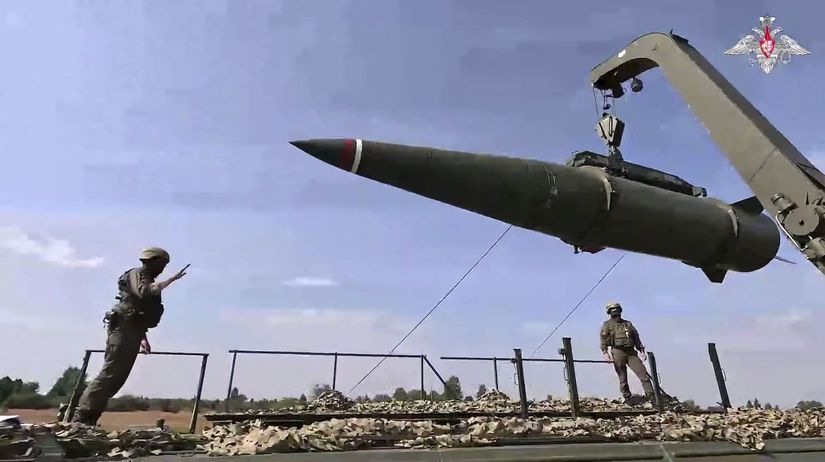The aggressor's terror against the attacked state in one direction has not yet been as great as it has been in the past month. In October, Russia fired the most ballistic missiles against Ukraine since the outbreak of the war in February 2022. There were 101 in total.

The Russians used two types of ballistic missiles. The Iskander weighs 3,800 kilograms and has a range of 500 kilometers. Missiles of this type, which are mounted on launch vehicles, are mainly used to destroy ground targets. The Kinzhal ballistic missiles fulfill the same primary role. They differ not only in their greater weight (4,000 kg), but also in their significantly longer range (2,000 km). They are air-to-ground missiles, and their carriers are military aircraft that have the Kinzhal suspended under the fuselage.
During October, the Russians attacked the Ukrainians with 87 Iskander missiles and 14 Kinzhal missiles. The aggressor's casualties were serious, even considering that air defenses were able to neutralize only a few of them."Only fourteen Iskanders and two Kinzhals were destroyed," the Dialog server warned.
Ukrainian military expert Valery Romanenko told the Espreso TV channel that these ballistic missiles have become the main tool of Russian terror."Russia is exploiting the vulnerability of our air defenses," he warned, adding that the low number of missiles shot down underscores the need for allies to supply Ukraine with modern systems to defend against such attacks. This is especially true of the American Patriot system.
According to Ukrainian intelligence, the Russians have been able to produce almost 70 ballistic missiles every month. From the Ukrainian point of view, it is particularly worrying that the occupying forces have recently managed to improve their missiles. Yuri Ihnat, a spokesman for the Ukrainian Air Force, gave details on national television. He pointed out that Russian ballistic missiles are becoming increasingly difficult to intercept.
What is it about?"Of course, it is much more complicated to destroy missiles that fly on a quasi-ballistic trajectory, which means that they change their route before approaching the target," Ihnat explained. He identified another problem as the Russians firing missiles from different directions, which makes it difficult for Ukraine's limited air defense capabilities to function effectively.
Painful hit: Ukrainians hit gigantic Vladimirskaya substation
The Financial Times also mentioned the technical modifications to Russian ballistic missiles, citing findings from Western intelligence services:"The modernization of the Iskander and Kinzhal missiles was done with surgical precision to confuse air defenses." This is related to what Ihnat was talking about: in the final phase of the flight, they begin to oscillate.
The Ukrainians had already experienced a lower success rate in neutralizing Russian ballistic missiles in September of this year. While they managed to shoot down more than a third of them during the summer, they managed to destroy only six percent of them during September.
The Russians are deploying ballistic missiles not only against military targets, but also destroying energy infrastructure. On the other hand, it must be said that the Ukrainians are strongly responding with air strikes with the same intention: targeting refineries and pipelines, which is causing a shortage of gasoline supplies in Russia.
Ukrainian President Volodymyr Zelensky recently pointed out at a press conference that the effectiveness of air defense has been reduced by the changing weather conditions. Summer has been replaced by an often dry autumn."Meteorologists estimated that the effectiveness of air defense has decreased by twenty to thirty percent." Zelensky believes that the Russians have intensified their ballistic missile attacks also in connection with the worsening weather: "They were waiting for rainy, foggy weather."
Despite the recent problems with Iskanders and Kinzhals, the Ukrainians can be relatively satisfied with the protection of their airspace. One example: on October 10, they faced 465 Russian drones and 32 missiles. They managed to destroy 420 of them.
It looked more or less the same a week later, when Putin's army carried out large-scale attacks. It attacked Ukraine on the night of October 16. It deployed 320 drones and almost 40 missiles of various types. The Ukrainians destroyed almost 290 of them. On the other hand, this massive attack also revealed their weaknesses against the modernized Iskander and Kinzhal: 28 of the total number of 37 missiles were ballistic missiles, of which the air defenses were unable to hit a single one.
© Copyright reserved

